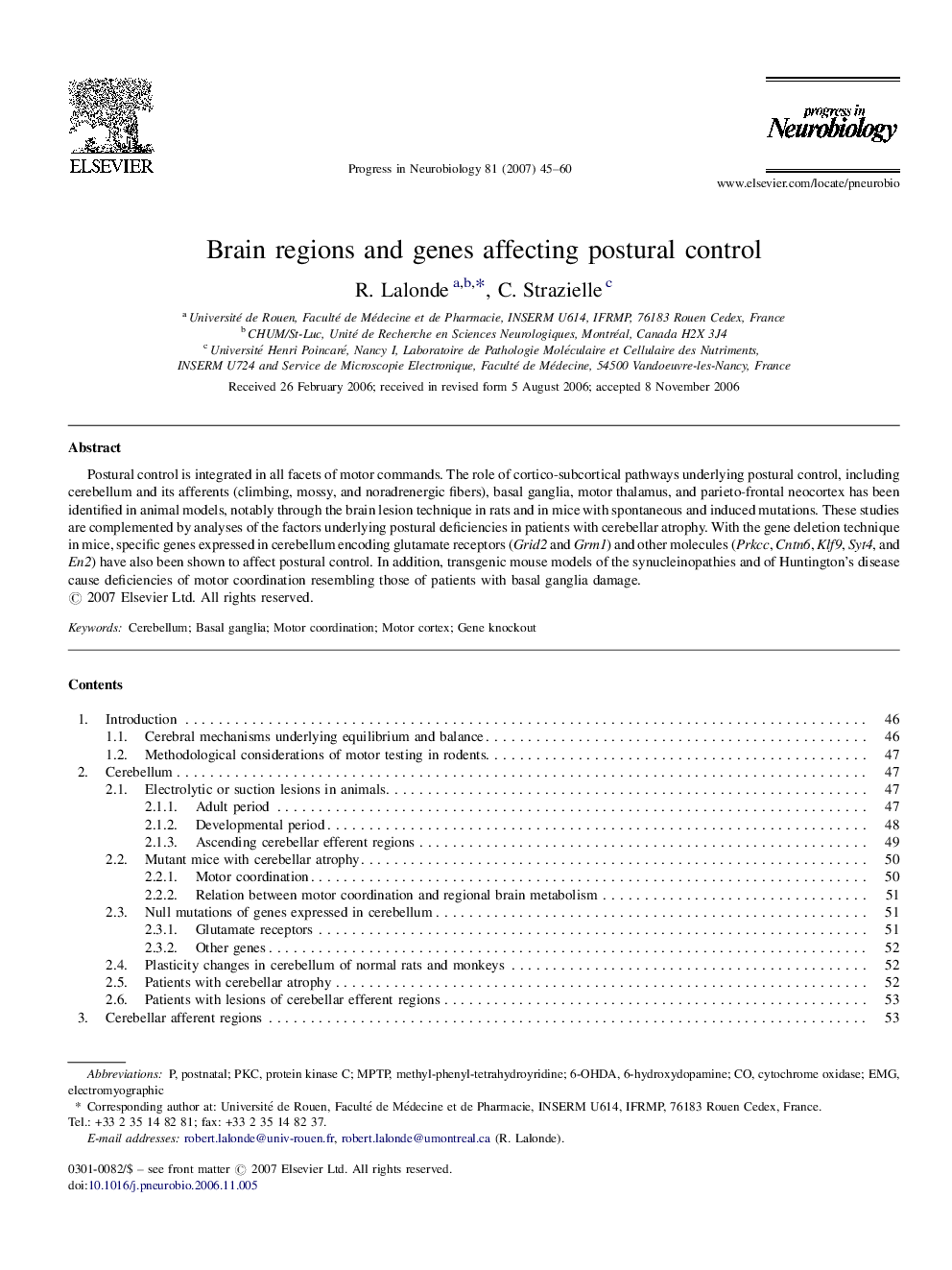| Article ID | Journal | Published Year | Pages | File Type |
|---|---|---|---|---|
| 4353985 | Progress in Neurobiology | 2007 | 16 Pages |
Abstract
Postural control is integrated in all facets of motor commands. The role of cortico-subcortical pathways underlying postural control, including cerebellum and its afferents (climbing, mossy, and noradrenergic fibers), basal ganglia, motor thalamus, and parieto-frontal neocortex has been identified in animal models, notably through the brain lesion technique in rats and in mice with spontaneous and induced mutations. These studies are complemented by analyses of the factors underlying postural deficiencies in patients with cerebellar atrophy. With the gene deletion technique in mice, specific genes expressed in cerebellum encoding glutamate receptors (Grid2 and Grm1) and other molecules (Prkcc, Cntn6, Klf9, Syt4, and En2) have also been shown to affect postural control. In addition, transgenic mouse models of the synucleinopathies and of Huntington's disease cause deficiencies of motor coordination resembling those of patients with basal ganglia damage.
Keywords
Related Topics
Life Sciences
Neuroscience
Neuroscience (General)
Authors
R. Lalonde, C. Strazielle,
